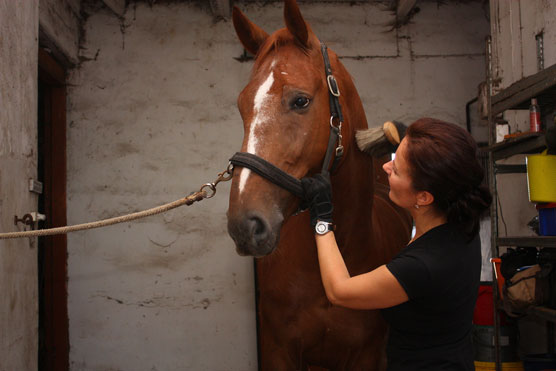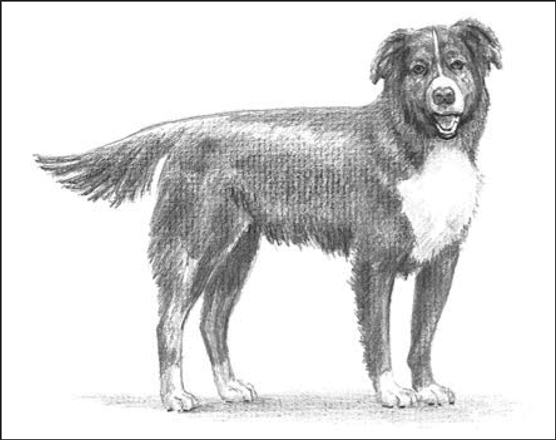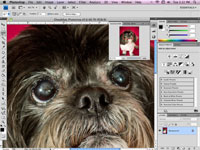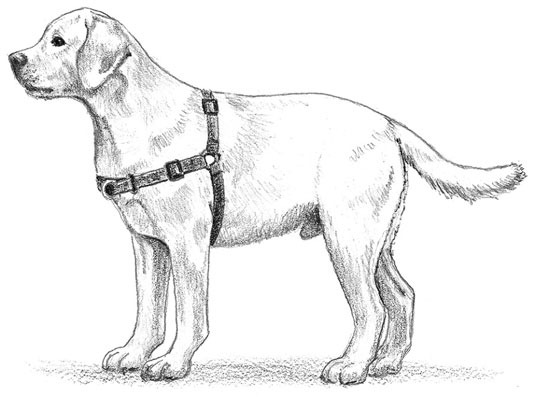Documentos oficiales de registro de perros para su pastor alemán
Descubra cómo asegurarse de que su pastor alemán es genuino con los documentos de registro adecuados. Aprenda sobre el AKC, SV y otros registros importantes.
Los caballos no pueden sentarse en tu regazo; por otro lado, no puedes ir a galopar con un gatito. Como cualquier animal, los caballos necesitan cuidados diarios y una preparación regular. Si está comprando un caballo, debe saber las preguntas correctas que debe hacer, y si tiene un caballo, debe poder reconocer cuándo su caballo está experimentando una emergencia de salud. Los caballos son una gran responsabilidad, ¡pero valen la pena!

© Por Anastasija Popova / Shutterstock.com
Comprar un caballo es muy importante. Es un proceso que merece y necesita un poco de reflexión y preparación. Cuando comience su aventura de compras de caballos, ármese con las siguientes preguntas para el vendedor:
¿Cuánto pides por el caballo? ¿Es este precio negociable?
¿Qué edad tiene el caballo?
¿Qué tan grande es el caballo? (Cuantas manos?)
¿Cuál es el género y el tamaño del caballo?
¿En qué disciplina se monta a caballo?
¿Ha tenido el caballo alguna vez entrenamiento profesional?
¿Es el caballo adecuado para un jinete principiante?
¿Es el caballo adecuado para niños (si tiene niños que monten a caballo)?
¿El caballo se carga en un remolque?
¿Tiene el caballo algún mal hábito, como acurrucarse (morder una cerca mientras aspira aire), tejer (moverse hacia adelante y hacia atrás repetidamente de la pata delantera a la pata delantera) o tirar hacia atrás cuando está atado?
¿Tiene el caballo algún problema médico o antecedentes de problemas médicos como cólicos, cojera o alergias?
¿Por qué vendes el caballo?
Cuidar de un caballo es una gran responsabilidad y tienes que atender a tu amigo equino todos los días. La siguiente lista describe las tareas que debe realizar cada día para su caballo:
Mantener a su caballo limpio y con buen aspecto es una parte esencial de la propiedad de un caballo y, además, ¡puede ser divertido! La siguiente es una lista de herramientas de aseo que debe tener a mano:
Currycomb de goma
Cepillo rígido
Cepillo suave
Cuchilla derramada
Tela
Cepillo de melena y cola
Desenredante de melena y cola
Púa de pezuña
Cepillo para pezuñas
Suministros de baño (como champú, acondicionador y esponjas)
Tijeras
Su caballo, como usted y cualquier otro animal, es susceptible a problemas de salud . Los problemas de la columna de síntomas de la siguiente tabla son los que merecen atención inmediata y una llamada al veterinario.
| Síntoma (s) | Causa posible | Pasos a realizar |
|---|---|---|
| Sangrado | Lesión | Aplicar presion; llamar al veterinario |
| Sangre en la orina | Infección grave o lesión de la vejiga. | Llame al veterinario inmediatamente |
| Toser y salivar con la cabeza gacha cuando la comida sale por la boca |
Asfixia | El caballo puede respirar, pero llame al veterinario de inmediato. |
| Incapacidad para pararse; asombroso | Enfermedad severa | Llame al veterinario inmediatamente |
| Excrementos líquidos y malolientes | Diarrea | Llame al veterinario inmediatamente |
| Sudoración profusa, acostarse y levantarse, patear el suelo, morderse el abdomen |
Cólico | Retire la comida; llamar al veterinario inmediatamente |
| Respiración rápida, respiración ronca, tos fuerte | Enfermedad o infección | Llame al veterinario inmediatamente |
| Negativa a comer | Enfermedad grave o cólico leve | Llame al veterinario inmediatamente |
| Dolor severo | Lesión o enfermedad | Llame al veterinario inmediatamente |
| Esfuerzo para defecar u orinar | Bloqueo intestinal o uretral | Llame al veterinario inmediatamente |
| Hinchazón o parte del cuerpo que está caliente al tacto. | Lesión | Llame al veterinario inmediatamente |
| Ojo lloroso; ojo cerrado ojo rojo; ojo nublado | Lesión o infección ocular | Llame al veterinario inmediatamente |
| Temperatura significativamente por encima o por debajo de 98–101.5ºF |
Fiebre | Llame al veterinario inmediatamente |
Para ver las cosas desde la perspectiva del caballo, necesitas saber, literalmente, cómo el caballo ve el mundo. Los humanos evolucionaron para ser cazadores y recolectores, persiguiendo presas y encontrando plantas apropiadas para comer. Los caballos, por otro lado, están diseñados para evitar a los cazadores y se comen casi todo lo que crece a su alrededor. Dadas estas distinciones fundamentales, los sentidos del caballo están destinados a tener matices que son algo diferentes a los de un humano.
Visión
La vista es el sentido equino más importante. Para un animal de presa como el caballo, en la naturaleza, una buena vista significa la diferencia entre la vida y la muerte. Literalmente, ver que se avecinan problemas es la mejor manera que tiene el caballo para llegar a un lugar seguro antes de que un depredador se acerque demasiado.
Debido a que los caballos tienen cabezas largas y estrechas con ojos a ambos lados, tienen la capacidad de captar más la vista que los humanos. Cuando sus cabezas miran hacia adelante, los caballos tienen un campo de visión de casi 180 grados. Pueden ver el frente y casi todo el contorno de su cuerpo, aunque tienen algunos puntos ciegos.
Uno de los puntos ciegos de un caballo está directamente detrás, por lo que nunca debe acercarse a un caballo desde atrás a menos que el caballo ya sepa que está allí.
No one knows for sure how far horses can see, mainly because horses have trouble pronouncing the letters on eye tests. Scientists who have done experiments in this field have made some educated guesses that horses can see pretty darn far, in the realm of at least hundreds of yards away. Horses can distinguish patterns, which means they’re able to take in fine details. They can also perceive depth well.
Horses also have much better night vision than humans. Many a rider has been out on a dark, moonless trail, dumbfounded by his or her horses’ ability to see where the pair are going despite the incredibly dim light.
Scientists know far less about horses’ color vision than they do about other areas of equine sight, but they’re certain that horses see many of the same colors that we see, with two exceptions: red and green. In fact, they believe that horses have the same color vision as humans who suffer from red-green color blindness. That said, horses are still able to pick out the greenest grass in a field!
Hearing
A species that survives by getting a head start on marauding predators needs a pretty good sense of hearing. The fact that horses have survived all the way to modern times is testimony to their incredible hearing, which is considerably better than a human’s.
If you look at the shape of the horse’s ear, you can see that it’s built sort of like a funnel. With this design, the ear can capture sound in its outer part and channel it down into the ear canal. The broad outer part of the horse’s ear very adequately takes in the slightest sound in the horse’s environment.
Using very mobile ears, horses constantly monitor the world around them. Just imagine trying to pay complete attention to different sounds coming in to either ear at the same time. Impossible for a human, yet the horse does this on a steady basis. A horse can take in the sounds of a car driving by, children playing, a bird chirping and a human approaching, all at once, from different places in the environment. The horse then processes that information and makes split second decisions about whether to react — all while picking out the best blades of pasture grass or meandering down a rocky trail. The process really is mind-blowing.
Loud, unfamiliar noises can send a relaxed horse into a tizzy. On the other hand, a placid, reassuring sound can ease a horse’s worries. It’s amazing to see how a frightened horse can be comforted by a soft, gentle voice from a calm and confident human. Keep this fact in mind when handling your horse in a particularly noisy or frightening environment.
Smell
Like most non-human animals, horses have an acute sense of smell that they regularly employ to provide them with information on what is going on around them. Horses use their sense of smell in a number of different and important ways.
Nature equipped the equine with a strong olfactory sense that can tell the animal whether a predator is near. All it takes is a strong upwind breeze to bring a dangerous scent to the attention of a wild herd. After getting a whiff of the predator, the herd literally high-tails it (their tails stick way up in the air as they flee) out of there in a flash.
Horses also use smell as part of their complicated social structure. Horses typically greet each other nose to nose, each taking in the odor of the other. Horses also come to recognize each other by scent as well as by sight. Mares and foals quickly memorize each other’s scents and use this information to help locate each other in a crowd of horses.
Most horses also greet humans in the same way. When you introduce yourself to a horse for the first time, notice how the horse reaches out his muzzle to sniff you. Given this, the most polite way to approach a horse is with the back of your hand extended so the horse may take in your personal scent. Letting a horse breathe in your scent tells the animal that you are a fellow herdmate (not a predator), and usually makes the horse more agreeable to being handled.
Touch
The equine sense of touch is an important (although often overlooked) element to the horse. Although many people think that horses have a tough hide, they really don’t. Their skin is tougher than our human epidermis, but it is still rich with nerve endings.
If you sit on a pasture fence and watch a herd of horses for a few hours, you’ll see plenty of evidence of how horses use touch to communicate with each other. Mothers reassure their babies with a brush of the muzzle; comrades scratch each other’s itches with their teeth. Whenever a message needs to be sent from one horse to another, visual cues and touch — or the threat of it — are nearly always used.
Humans can also use touch to convey messages to the horse. A gentle rub down, a pat on the shoulder, a vigorous massage in just the right place — these are all ways of saying, “I’m your friend” to a horse. Sometimes, if you’re lucky, you’ll get a similar tactile message in return.
Check out the following resources as your appetite for equine (horse) knowledge increases.
Breed registries
Appaloosa Horse Club
2720 W. Pullman Rd.
Moscow, ID 83843-0903
(208) 882-5578
www.appaloosa.com
International Colored Appaloosa Association
4610 New Mexico 206
Milnesand, NM 88125
(547) 238-4280
www.icaainc.com
Arabian Horse Association
10805 E. Bethany Dr.
Aurora, CO 80014
(303) 696-4500
www.arabianhorses.org
American Miniature Horse Association
5601 South IH 35W
Alvarado, TX 76009
(817) 783-5600
www.amha.com
American Morgan Horse Association
4066 Shelburne Rd., Suite 5
Shelburne, VT 05482-0960
(802) 985-4944
www.morganhorse.com
American Paint Horse Association
P.O. Box 961023
Fort Worth, TX 76161-0023
(817) 834-2742
www.apha.com
American Quarter Horse Association
1600 Quarter Horse Dr.
Amarillo, TX 79104
(806) 376-4811
www.aqha.com
Racking Horse Breeders Association of America
67 Horse Center Rd., Suite B
Decatur, AL 35603-9735
(256) 353-7225
www.rackinghorse.com
American Saddlebred Horse Association
4083 Iron Works Pkwy.
Lexington, KY 40511-8434
(859) 259-2742
www.saddlebred.com
United States Trotting Association (Standardbreds)
6130 S. Sunbury Rd.
Westerville, OH 43081-9309
(877) 800-8782
www.ustrotting.com
Tennessee Walking Horse Breeders’ & Exhibitors’ Association
P. O. Box 286
Lewisburg, TN 37091-0286
(931) 359-1574
www.twhbea.com
The Jockey Club (Thoroughbreds)
821 Corporate Dr.
Lexington, KY 40503-2794
(859) 224-2700
www.jockeyclub.com
Educational organizations
American Horse CouncilDocument1
1616 H Street NW, 7th Floor
Washington, DC 20006
(202) 296-4031
www.horsecouncil.org
CHA (Certified Horsemanship Association)
1795 Alysheba Way, Suite 7102
Lexington, KY 40509
(859) 259-3399
www.cha-ahse.org
United States Pony Clubs, Inc.
4041 Iron Works Pkwy.
Lexington, KY 40511-8462
(859) 254-7669
www.ponyclub.org
Equine rescue groups
American Standardbred Adoption Program
745 S Main St.
Viroqua, WI 54665
(608) 689-2399
www.4thehorses.com
Standardbred Retirement Foundation
42 Arneytown-Hornerstown Rd.
Cream Ridge, NJ 08514
(609) 738-3255
www.adoptahorse.org
The Horse Protection League
P. O. Box 741089
Arvada, CO 80006
(303) 216-0141
thehorseprotectionleague.org
Equine equipment
Dover Saddlery, Inc.
525 Great Rd.
Littleton, MA 01460
(800) 406-8204
www.doversaddlery.com
Jeffers Equine
P.O. Box 100
Dothan, AL 36302
(800) 533-3377
www.jeffersequine.com
Logan Coach Trailers
2990 S. 800 W.
Nibley, UT 84321
(800) 742-7047
MD Barns
720 E. Locust Street
Ontario, CA 91761
(800) 343-2276
www.mdbarnmaster.com
Morton Buildings, Inc.
P.O. Box 399
Morton, IL 61550-0399
(800) 447-7436
www.mortonbuildings.com
State Line Tack
395 Oak Hill Rd., Suite 210
Mountain Top, PA 18707
(888) 839-9640
www.statelinetack.com
Sundowner Trailers, Inc.
9805 OK Hwy, 48 South
Coleman, OK 73432-8523
(800) 438-4294
www.sundownertrailer.com
Equine slaughter information
American Association of Equine Practitioners
4033 Iron Works Pkwy.
Lexington, KY 40511
(859) 233-0147
www.aaep.org
Equine Advocates, Inc.
P.O. Box 354
Chatham, NY 12037-0354
(518) 245-1599
www.equineadvocates.org
Equine Protection Network, Inc.
P.O. Box 232
Friedensburg, PA 17933
www.saveamericashorses.net
Humane Society of the United States
1255 23rd Street NW, Suite 450
Washington, DC 20037
(866) 720-2676
www.humanesociety.org
Equine retirement facilities
Apple River Ranch Equine Retirement
415 Jackson St., Box 358
Hanover, IL 61041
(815) 591-3819
appleriver1.tripod.com
The P.E.I. Equine Retirement Society
Milburn, O’Leary RR#2
Prince Edward Island, C0B-1V0
Canada
(902) 859-3116
www.angelfire.com/ca/equineretirementsoc/
Heavenly Horse Haven
P.O. Box 391998
Anza, CA 92539-1998
(951) 551-3561
www.heavenlyhorsehaven.org
Pet loss hotlines
ASPCA Grief Counseling Hotline
(877) 474-3310
Tufts University School of Veterinary Medicine (Massachusetts)
(508) 839-7966
Virginia-Maryland Regional College of Veterinary Medicine
(540) 231-8038
Michigan State University College of Veterinary Medicine
(517) 432-2696
Washington State University College of Veterinary Medicine
(866) 266-8635
Activity organizations
American Endurance Ride Conference (AERC)
P.O. Box 6027
Auburn, CA 95604
(866) 271-2372
www.aerc.org
Cowboy Mounted Shooting Association
P.O. Box 157
Roswell, NM 88202
(888) 960-0003
www.cowboymountedshooting.com
National Reined Cow Horse Association
1017 N. Hwy. 377
Pilot Point, TX 76258
(940) 488-1500
www.nrcha.com
North American Trail Ride Conference (NATRC)
P.O. Box 969
Beatrice, NE 68310
(303) 688-1677
www.natrc.org
Ride & Tie Association
P.O. Box 2750
Rancho Santa Fe, CA 92067
www.rideandtie.org
United States Dressage Federation
4051 Iron Works Parkway
Lexington, KY 40511
(859) 971-2277
http://usdf.org
United States Equestrian Federation
4047 Iron Works Parkway
Lexington, KY 40511
(859) 258-2472
Western Dressage Association of America
P.O. Box 2349
Parker, CO 80134
(720) 662-4584
www.westerndressageassociation.org
Other equine organizations
American Farriers Association
4059 Iron Works Pkwy., Suite 1
Lexington, KY 40511-8434
(859) 233-7411
www.americanfarriers.org
Asociación Estadounidense de Instructores de Equitación
28801 Trenton Ct.
Bonita Springs, FL 34134-3337
(239) 948-3232
www.riding-instructor.com
The Equine Connection National AAEP Locator Service (veterinarios de caballos)
https://aaep.org/horse-owners/get-dvm
North American Riding for the Handicapped
PO Box 33150
Denver, CO 80233
(800) 369-RIDE (800-369-7433)
www.narha.org
Sitios web de información sobre caballos
HorseIllustrated.com
www.horseillustrated.com
InfoHorse.com
www.infohorse.com
El Museo Internacional del Caballo
www.imh.org
TheHorse.com
www.thehorse.com
Publicaciones de caballos
Equus
(800) 829-5910
www.equusmagazine.com
Horse & Rider
(877) 717-8928
www.horseandrider.com
Caballo ilustrado
(844) 330-6373
www.horseillustrated.com
Practical Horseman
(877) 717-8929
www.practicalhorsemanmag.com
Western Horseman
(817) 737-6397
www.westernhorseman.com
Young Rider
(844) 330-6373
www.youngrider.com
Lectura recomendada
Los siguientes libros pueden ayudarlo a aprender más sobre los diferentes aspectos del cuidado de los caballos y la equitación o ayudarlo a convertirse en un mejor jinete al ponerlo en forma.
Descubra cómo asegurarse de que su pastor alemán es genuino con los documentos de registro adecuados. Aprenda sobre el AKC, SV y otros registros importantes.
Descubre todo sobre los híbridos de Border Collie, sus características, cuidados y por qué son una excelente opción como mascotas. Conoce las razas más populares y sus beneficios.
El desplume de plumas en cacatúas es un síndrome complejo que puede indicar problemas físicos o psicológicos. Descubre las causas, soluciones y consejos actualizados para manejar este problema en tu ave.
Descubre cómo tratar los ácaros del oído y los ácaros de la sarna en cachorros. Aprende sobre los síntomas, diagnóstico y tratamientos efectivos para mantener a tu mascota saludable.
Descubre cómo corregir los ojos claros y nublados en fotos de perros mayores. Aprende técnicas avanzadas en Photoshop para mejorar la apariencia de los ojos de tu mascota.
Descubre por qué los loros hablan y cómo enseñarles a comunicarse. Aprende técnicas efectivas para mejorar la relación con tu loro y fomentar su habla.
¡Es hora de empezar a organizar todas las fotos de tu perro! Lightroom tiene algunas herramientas de organización bastante impresionantes, cuyo meollo es una pequeña función llamada Colecciones. Verá, cuando importa fotos a Lightroom, el software las agrega automáticamente al panel Carpetas, a través del cual puede navegar, al igual que navega a un […]
A medida que su cachorro madura y comienzan sus lecciones, es posible que desee cambiar de un collar o arnés de nailon a un collar de acondicionamiento o entrenamiento, que desalienta las embestidas, los tirones y la reactividad general, y a una correa más resistente. Utilice el refuerzo positivo para fomentar la concentración de su cachorro. Los collares de acondicionamiento animan a su cachorro a caminar cerca de usted a través de […]
Dependiendo de las actividades al aire libre de su Jack Russell Terrier, solo debería tener que bañarlo cada mes o menos. Por supuesto, si tu terrier está rodando por la tierra todos los días, es posible que tengas que bañarlo con un poco más de frecuencia. Los baños cortos y más frecuentes son mejores que los largos e infrecuentes. Obtener […]
Los criadores de renombre no solo están felices de responder preguntas, sino que también les dan la bienvenida como el signo del comprador cariñoso con el que quieren compartir sus gatos y gatitos. Puede averiguar mucho sobre el criador haciendo algunas preguntas. Pruébelos y escuche atentamente la respuesta correcta: ¿Cuánto tiempo hace que […]



